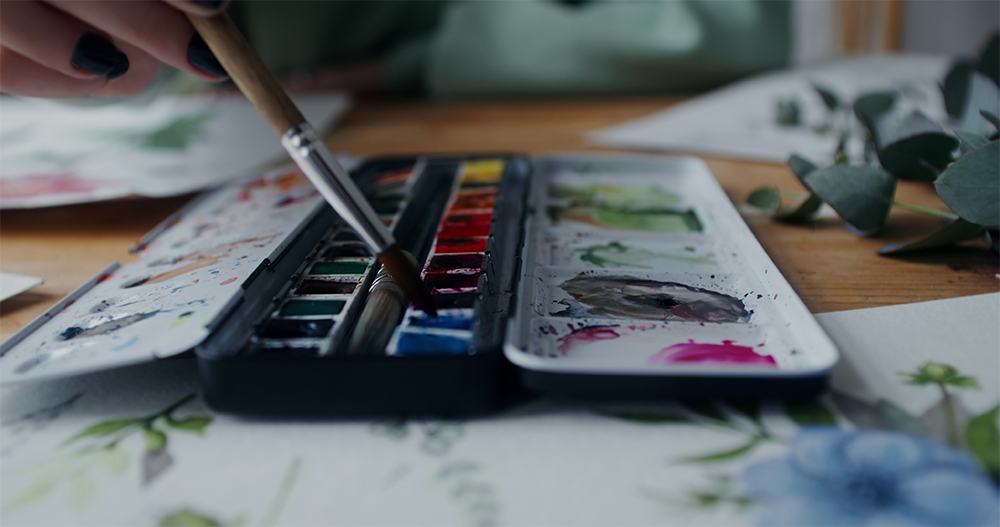1. Using Too Much Water

The Mistake: Applying too much water can cause colors to bleed uncontrollably, making details difficult to maintain. It can also lead to warping of the paper.
How to Fix It: Use a quality watercolor paper that can handle water well. If you’ve already applied too much water, gently blot the excess with a dry brush or paper towel. To avoid this issue in the future, control your brush’s water load by dabbing it on a tissue before applying paint.
2. Creating Muddy Colors
The Mistake: Over-mixing colors or layering too many can result in dull, muddy tones instead of vibrant hues.
How to Fix It: Stick to mixing only two or three colors at a time. Avoid overworking the paint on the paper—let layers dry before adding more. Use a clean brush and fresh water when switching colors.
3. Overworking the Paper
The Mistake: Repeatedly brushing over the same area can damage the paper, causing it to pill or tear.
How to Fix It: Be patient with your layers. If you notice paper fibers lifting, stop immediately and allow the area to dry completely before making further adjustments. Using high-quality cotton paper can also help prevent damage.
4. Uneven or Harsh Edges
The Mistake: Sometimes, watercolors dry with unwanted hard edges, disrupting the flow of a painting.
How to Fix It: While the paint is still damp, use a clean, damp brush to soften the edges. If the paint has already dried, try lightly re-wetting the area and blending it out.
5. Colors Drying Lighter Than Expected
The Mistake: Watercolor paints tend to dry lighter than they appear when wet, leading to less intensity in your painting.
How to Fix It: Adjust by making your initial mix slightly darker than you think you need. Layering glazes can also help deepen colors without making them muddy.
6. Unintended Backruns (Blooms)
The Mistake: Adding too much water to a partially dried area can cause blooms or cauliflower-like patterns.
How to Fix It: To fix an unwanted bloom, you can try lifting the excess pigment with a dry brush. To prevent blooms, wait for one layer to dry completely before adding more paint.
7. Skipping the Planning Stage
The Mistake: Jumping into a painting without a plan can lead to composition issues or unintentional mistakes.
How to Fix It: Lightly sketch your composition before painting and test colors on scrap paper to ensure they work well together. Having a rough roadmap will help guide your painting process.
Conclusion
Mistakes are a natural part of learning watercolor painting. The key is to understand how to fix them and how to avoid them in the future. By practicing these corrective techniques, you’ll gain more control over your work and develop a better understanding of how watercolors behave. Happy painting!
